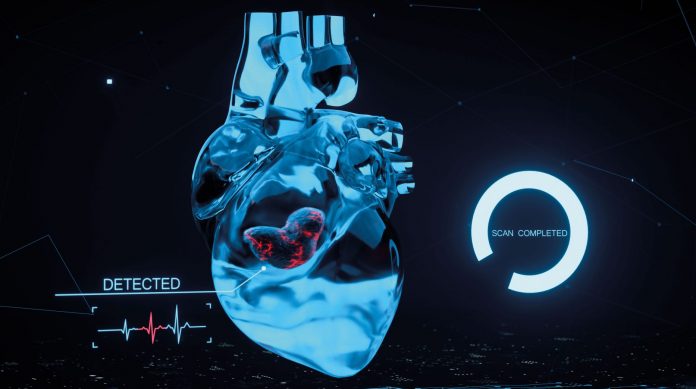
A new, point-of-care, electrochemical biosensor that is similar to the lateral flow tests for COVID, can detect the presence of two heart failure biomarkers from a drop of saliva in as little as 15 minutes. The new non-invasive test could move vital screening from the lab to the home and could help lessen death rates for people who don’t have access to medical testing facilities.
The team’s research will be presented at the ACS Fall 2024 meeting, being held this week in Denver.
“Our device would be ideal for people who are at high risk for heart failure but have limited access to a hospital or a centralized lab,” said Trey Pittman, a graduate student at Colorado State University who helped developed the new test. “Working on this project to address health disparities in rural and low-resource areas really hits home for me because I’m from Mississippi, which has one of the highest mortality rates from heart failure in the United States.”
Current standard of care for heart failure screening is a blood test that measures levels of B-type natriuretic peptide (BNP), which indicates when a heart is overstressed and is not able to pump enough oxygenated blood throughout the body. But many people with heart failure in underserved communities may not have access to this form of testing.
Pittman and his team at Colorado State saw the potential to develop a simple, at-home saliva test for heart failure to help address this healthcare disparity. They surmise that such a device would allow for a person to monitor their heart function every few weeks, as opposed to twice annually. Currently, the broad use of saliva test for heart failure have been hampered by complicated manufacturing methods needed to produce them and a lack of biomarker data to positively identify heart failure.
For their work, Pittman and colleagues combined two innovations developed in the lab of Charles Henry, PhD, at Colorado State: a saliva microfluidic device and a biosensor for the protein biomarkers indicative of heart failure—Galectin-3 and S100A7. Their new prototype, dubbed an electrochemical capillary-driven immunoassay (eCaDI), comprises five layers. Three layers of clear plastic bonded together by two layers of double-sided adhesive.
The top layer has tiny holes drilled into it that allows for the loading of the saliva sample. The middle layer includes small channels with squares of blotting paper to draw the saliva from the loading site through the channels. Wedged between the layers are glass fiber reagent pads that react with the sample to measure levels of Galectin-3 and S100A7 when an electric current is applied and the bottom layer has carbon printed electrodes that are powered by an external source called a potentiostat to drive the chemical reaction on the reagent pads.
“The devices are very easy to assemble,” says Pittman. “In about 20 to 30 minutes, we can make five of them.” The eCaDI is single use, and the researchers estimate that each one costs about $3.00. The potentiostat, which is reusable, costs about $20.
To test the functionality of eCaDI, the team spiked human saliva samples with levels of the biomarkers that would indicate a patient is in heart failure, with the new device accurately detecting the amounts of the two proteins.
With these results in hand, the team will now move to work with collaborators in the lab of Chamindie Punyadeera, PhD, at Griffith University, Australia, whose work had quantified the levels of Galectin-3 and S100A7 in saliva that indicate heart failure. The Griffith team will now conduct trials in humans of both healthy people and people with heart failure to validate the test.





